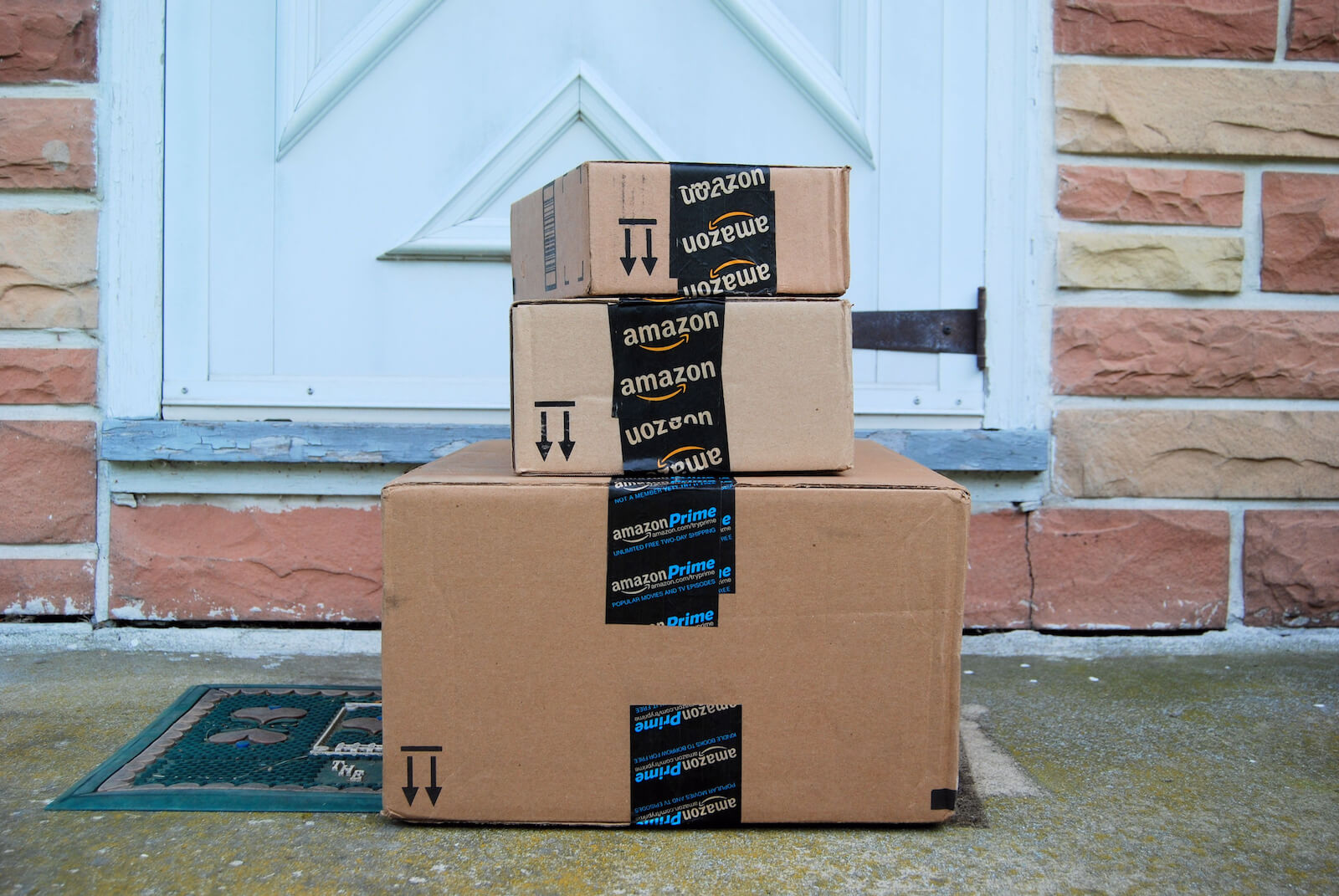When deciding where to sell products online, many merchants choose between selling on a marketplace and creating their own website. While each option has its own set of pros and cons – and there is no one-size-fits-all solution that works perfectly for everyone – we believe businesses that are truly serious about ecommerce should have their own website.
Of course, marketplaces (like Amazon, Etsy, eBay, and Walmart Marketplace) can be great sales channels for many merchants, but there are plenty of limitations. And according to BigCommerce’s History of Ecommerce, customers will soon expect to be able to “research, browse, shop, and purchase seamlessly between different devices and on different platforms (like a standalone web store, an Amazon presence, etc.)” — a marketplace alone is not enough.
Why your ecommerce company needs its own website
Learn why a standalone ecommerce website is absolutely necessary if you want your business to be around for the long-run.
1. Build a customer email list and market directly to them
One of the most important aspects of having your own website is that you can market directly to website visitors and customers. Unlike marketplaces, where people who buy your product are the customers of the marketplace, selling directly to consumers on your website means you get to collect their contact information. When you have your customers’ email addresses, you can send them email marketing promotions, offer discounts, and announce new products.
Getting repeat buyers is much more difficult on a marketplace, because you don’t have direct access to your customers. This gives you fewer opportunities to provide good customer service and promote your other products. Since it’s easier and cheaper to retain a customer than it is to get a new one, communicating with existing customers is a necessary part of generating revenue for your business.
Not only do you know who has bought from you in the past, but you also know what they bought, how much they spent, and what they are interested in. You can use this information to influence and suggest future purchases.
[Related article: How I Started My Online Store: 5 Steps to Successfully Launch a New Product]
2. Establish and strengthen your brand
When you sell your products on a marketplace, they are listed in a generic way. From character limits or word count restrictions to logo usage, there is little to no room for customization or branding. In fact, it is the marketplace’s brand that is in the forefront – not yours. This makes it nearly impossible to build brand awareness and recognition.
Most of the time, visitors and customers assume your product belongs to the marketplace without realizing you even exist. In other words, those who purchase your product will remember the marketplace instead of you.
Your goal should be for consumers to associate your product with your brand and think of your brand when they think of that category. When you run your own website, you get to maintain full control, including the way it looks, what it says, and how it works. The possibilities are endless. You can even reinforce your brand during the unboxing experience and use custom boxes to leave a lasting impression on your customers. Best of all, you get credit for your product – not a third-party marketplace!
3. Learn more about your audience
Having your own ecommerce website helps you better understand your customers. This includes demographics such as their location, as well as how they found your website and heard about you. You can analyze their behavior on your website, like what they looked at and the path they took to buy from you.
If there are certain traffic sources that are bringing in great customers for your business, you can choose to focus efforts there and put more money into those channels since you know they are profitable.
Not only do you gain information about your existing customers, but you can also learn information about where those who didn’t end up making a purchase fell off. Maybe it’s a product page that doesn’t have enough customer reviews or good enough photos, or perhaps people are abandoning shopping carts due to high shipping costs.
Or perhaps your homepage is confusing and lacks a user-friendly website design or your checkout process lacks the payment methods and payment options your target customers expect to find on your ecommerce store.
Just as critically, you need to use these insights to make improvements and optimize your website to increase conversions and help you sell more.
4. Make your own rules for your ecommerce site
With running your own ecommerce store comes the freedom to more directly impact the customer journey and user experience:
- You can add product photos and videos in certain places.
- You can alter the layout and navigation.
- You can change the color scheme and website theme.
- You can edit button placement and text.
- You can tell your company’s story.
- You can add a blog.
- You can feature certain customers.
Most importantly, you don’t have to worry about your competitors’ products popping up next to yours like you would with a marketplace.
Ecommerce website builders allow you to organize your website with clear product categories, product descriptions, product images, and any other ecommerce features which give store owners a customized ecommerce design solution.
You can also decide how you group and price products, and whether you want to offer free shipping. Offering something for free at the checkout process can influence online consumer behavior, as customers want to believe they are getting a good deal.
With your own website, it’s easier to experiment with this type of offer, since there are no strict rules or regulations with which you must comply. You also don’t have to worry about the impact these changes have on your conversions, since you don’t owe a percentage of each sale to a third-party, like you would on a marketplace. With a website, you ultimately control your storefront and have the ability to test and validate what works for your online business.
5. It’s never been easier with plug-and-play ecommerce platforms
With the rise of out-of-the-box ecommerce platforms like Shopify, Magento, Squarespace, and WooCommerce, creating a website can be a pretty straightforward and fast process. with store builder plugins that make running your small business easier than ever before. You can enter your details, choose from free or cheap templates, and create the shopping experience you want for your customers in real-time with site builders that allow you to drag-and-drop ecommerce store features to your preference.
Several of the ecommerce platforms available today are hosted and easy to maintain, with no web developer or design team needed. These do-it-yourself tools make it effortless to update content, add products, and make other adjustments all on your own.
Once your website is up and running, it can even be easy to integrate it with the other software you use. One common example is connecting your ecommerce platform to the system you use to manage order fulfillment.
If you outsource fulfillment to a 3PL, this can streamline the flow of information, eliminating the need for you to send your orders to the 3PL each day. This means your store automatically sends orders to your fulfillment provider to begin the process of picking, packing, and shipping.
6. Run creative marketing campaigns
Just because you have your own website doesn’t mean customers will automatically come flocking to you. Once you have a store, you will have to work to get shoppers there. The first step to acquiring customers is to drive traffic to your site through a mix of SEO strategies and a strong online presence on social media. It’s not always easy to set up the right campaigns; however, you have a lot more flexibility with the ways you can get people to find and buy from you.
Ecommerce businesses can customize their marketing strategy tailored to fit their audiences and their specific shopping habits.
Some common tactics include using Facebook and Google ads to reach your audience. You can also create content for your website by researching and incorporating the keywords people use to search for a solution like yours. You have the ability to run promotions or flash sales to generate interest and retarget past purchasers.
According to Clutch, 37% of shoppers say discounts or coupons can attract them back to retailers’ websites. Overall, there are countless ways to attract people to your brand – from creating videos to running a contest – that can lead to a sale.
Conclusion
Having your own website is an important piece of your ecommerce strategy. It is a great way for you to grow your brand, acquire loyal customers, gain new insights, and get creative with your marketing. However, relying on a single channel for all of your sales can also be problematic. Diversifying where you sell online can help you reach new customers, especially as ecommerce becomes more competitive.
If you need a partner to help fulfill ecommerce orders from your online store, check out ShipBob. ShipBob handles orders for both websites and marketplaces through direct integration. In a few clicks, you can connect your ecommerce platform to ShipBob with no coding required. Then, ShipBob will fulfill your orders at their network of warehouses located in the largest cities in the US.
Learn more
Learn how to bring in more customers that are actually likely to place an order on your store — and turn them into repeat buyers. Download our guide on How to Nail the Customer Experience.



